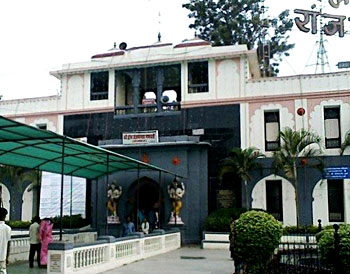 Mahaganapati Temple housing the shrine of Lord Ganesha is located in Ranjangaon village which is situated at a distance of about 50 km from Pune, enroute to Aurangabad in Maharashtra. Ranjangaoncha Mahaganapati is considered to be the last of the Ashtavinayak Temples of Maharashtra, celebrating eight instances of legends related to Ganesha.
Mahaganapati Temple housing the shrine of Lord Ganesha is located in Ranjangaon village which is situated at a distance of about 50 km from Pune, enroute to Aurangabad in Maharashtra. Ranjangaoncha Mahaganapati is considered to be the last of the Ashtavinayak Temples of Maharashtra, celebrating eight instances of legends related to Ganesha.
Legend of Mahaganapati Temple
The legend of the Mahaganapat Temple has it that a demon by name Tripurasura had built three powerful citadels. He was granted the boon of invincibility by Lord Shiva. With his attained powers he inflicted pain and suffering to all living beings in the heavens and on earth. Upon hearing the fervent appeals of the Gods, Shiva intervened but realized that he could not defeat the demon. It was upon hearing Narada Muni`s advice that Shiva urged Lord Ganesha to vanquish the demon. Lord Ganesha then shot a single arrow that pierced through the citadels, bringing an end to the demon. Shiva, the slayer of the Tripura citadels is enshrined at Bhimashankaram nearby.
A variation of this legend is commonly known in South India. Ganesha is said to have caused the axle in Shiva`s chariot to break, as the latter marches ahead for the battle with the demon without saluting Ganesha. Upon realizing his mistake, Shiva saluted his son Ganesha, and then proceeded for a battle against the powerful demon and won it.
Architecture of Mahaganapati Temple
The Mahaganapati Temple is east facing and has a huge and beautiful entrance gate. The idols of Jay and Vijay are present near the gateway. The temple is constructed in such a manner that the rays of the sun fall directly on the idol. In the temple of Mahaganapati, the idol of Mahaganapati (Lord Ganesha) is portrayed as seated on a lotus, flanked by his consorts Siddhi and Ridhi. The idol faces the east and is seated cross-legged with its trunk pointing to the left. The temple dates back to the period of Peshwa Madhav Rao. According to the history the temple was build in between 9th & 10th century. Madhavrao Peshwa made a room in the basement of the temple to keep the idol of the lord Ganesh. Later on Sardar Kibe of Indore renovated it. The temple faces the east. The real idol is buried behind the idol that can be seen in the temple. As with all other Vinayak temples, Ganesha Chaturti is celebrated in great splendor here.











